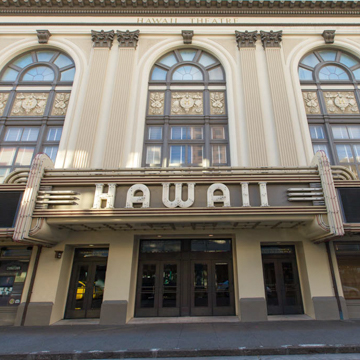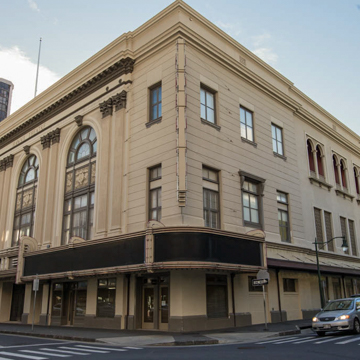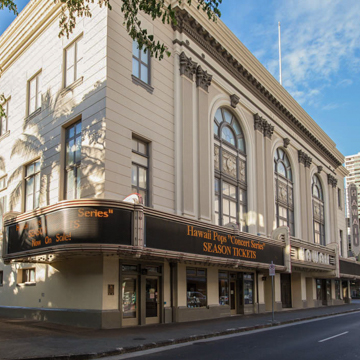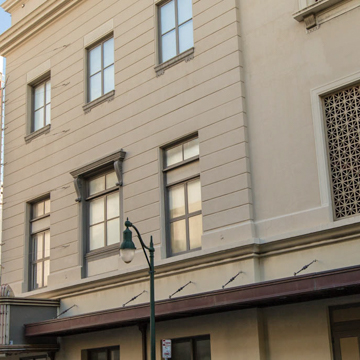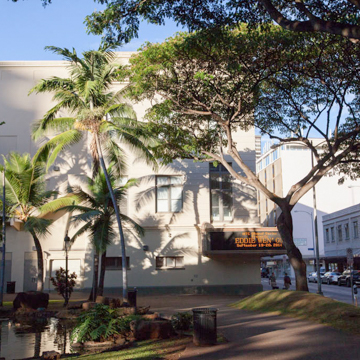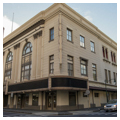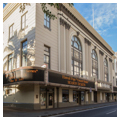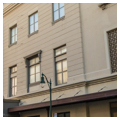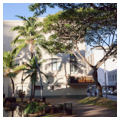Consolidated Amusement's flagship theater has an air of formal Renaissance Revival dignity with three large, second-story, round-arched windows and fluted pilasters. Initially, both stage and motion picture performances were presented here, and in 1929, the theater introduced talkies to the Islands with the screening of Showboat. Gradually movies asserted themselves as the prime attraction and the cinema operated until 1984. The building was saved from demolition by the Hawaii Theatre Center, which purchased it in 1988. Between 1996 and 2003, the center renovated the theater as a performing arts venue, with Malcolm Holzman of the New York City firm of Hardy Holzman Pfeiffer serving as the architect.
Much of the interior's Beaux-Arts splendor has been restored, including the proscenium with Lionel Walden's 40 × 12–foot ethereal mural, The Glorification of Drama. Gilded Corinthian columns frame the proscenium, while other decorative elements commemorate theatrical muses, including the two prominent bronzed-plaster bas-reliefs depicting the Shakespearean characters Hamlet and Portia, from the Merchant of Venice. The 1,760-seat auditorium's seventy-five-foot-high domed ceiling adds another element of grandeur. The double-cantilevered balcony was the first use of this structural system in Hawaii.
The partnership of Emory and Webb was formed in 1909. Walter L. Emory (1868– 1929), born in Fitchburg, Massachusetts, graduated from MIT, and came to Hawaii in 1898 to grow coffee in Olaa. He assisted Oliver G. Traphagan in the supervision of the Alexander Young Hotel (1903; demolished), and went on to study architecture, making this his profession. He served as the first president of the Hawaii Chapter of the American Institute of Architects (AIA), which he helped organize. Marshall H. Webb (1879–1931), a native of Philadelphia, attended Drexel Institute, where he studied marine engineering. Upon arrival in Hawaii in 1903 he worked for the Board of Public Works as a draftsman, and in 1907 joined the U.S. Engineer's Office to work on the design of Fort Ruger. Other major buildings by the partnership include St. Louis High School (OA158 and OA158.1) and the Advertiser Building (OA70). Upon Emory's death in 1929, Webb became the firm's senior partner.


















